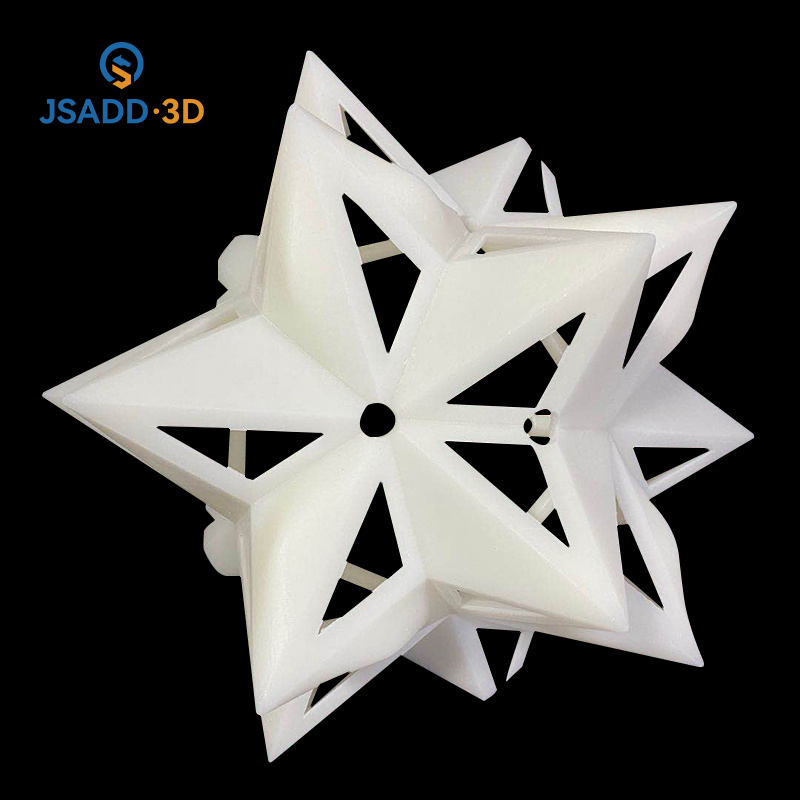SLA material features: high precision, smooth surfaces, large dimensions
1. Cationic polymerisation mechanism or hybrid photopolymerisation mechanism
2. Low volume shrinkage and low material deformation after printing
3. Wide range of initiators to choose from
Main features of SLA:
1. Laser wavelength 355nm, light intensity, light source will have attenuation
2. Larger forming size
3. Slow forming speed (point - line – surface)
4. Printing accuracy is worse than other light-curing printing
Application areas for SLA resin processes:
1) Rapid handling of high precision, high surface quality, multi-detailed manual samples for visual verification, assembly calibration and, in some cases, functional testing.
2) Special requirements with corresponding characteristic materials (usually for short time), e.g. heat resistant resins.
3) Printed products with good surface quality, high precision, can be used for casting molds.
SLA resin is widely used in the following fields:
Electronics, consumer products prototypes, medical device design and development, medical surgery models, cultural creative product development, architectural design models, automotive parts sample prototyping, large size industrial parts prototyping, small batch manufacturing of industrial products.

The liquid tank is filled with liquid photosensitive resin and the laser beam at UV wavelength is scanned over the surface of the liquid by means of a deflecting mirror and scanned according to the cross-sectional profile information, with the irradiated liquid passing over the light spot curing site. The planar scan thus produces layers that correspond to the layered planar pattern and are firmly bonded to the cured part of the previous layer, thus repeating until the entire part is complete. Workpieces using the SLAprocess usually require subsequent processing including cleaning, stripping, sanding, re-curing etc. to obtain a product that meets the requirements. the FDM moulding process requires support cantilevered parts and the same material is used for the product and the support. For colour models, post-colouring is required.
Light-cured materials greatly exceed the performance of traditional plastics, excelling in a number of areas such as flexibility, high temperature resistance, tensile strength and impact strength.
At present, there are many types of SLA additive resinsavailable on the market for 3D printing, and users need to find the appropriate material with the appropriate properties for their specific requirements to meet a variety of performance needs from JSADD 3D Company 3D Print Service Provider in China.
Contributor: Alisa
